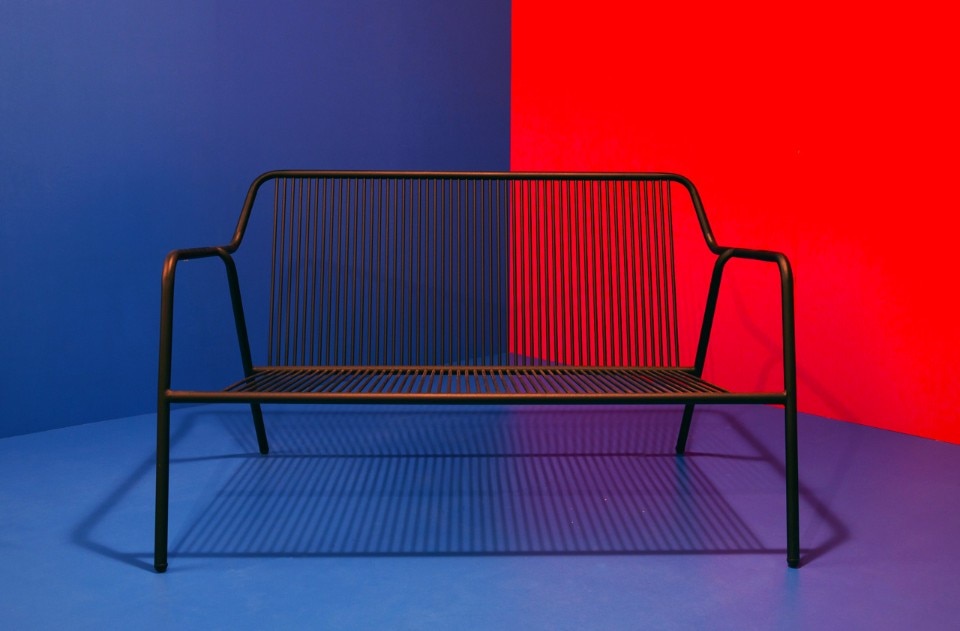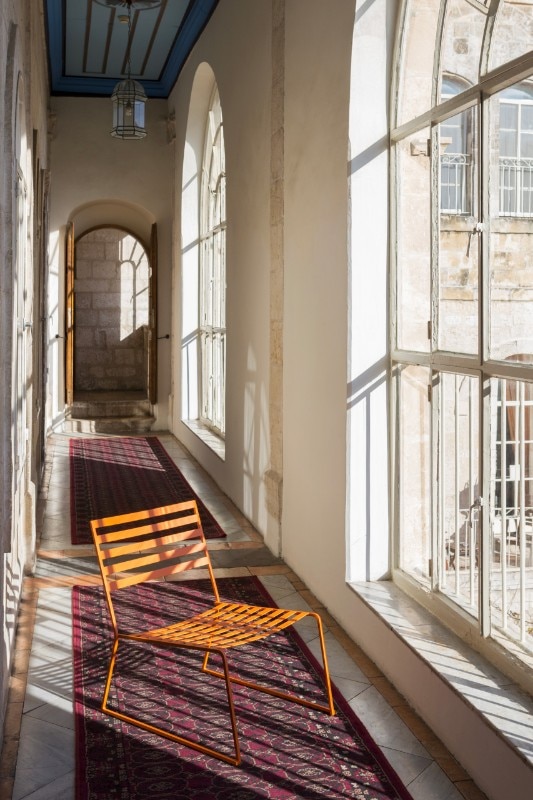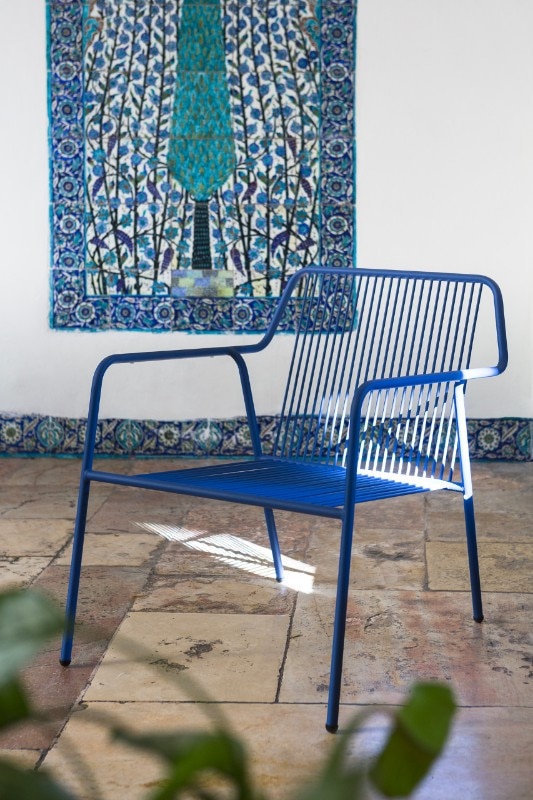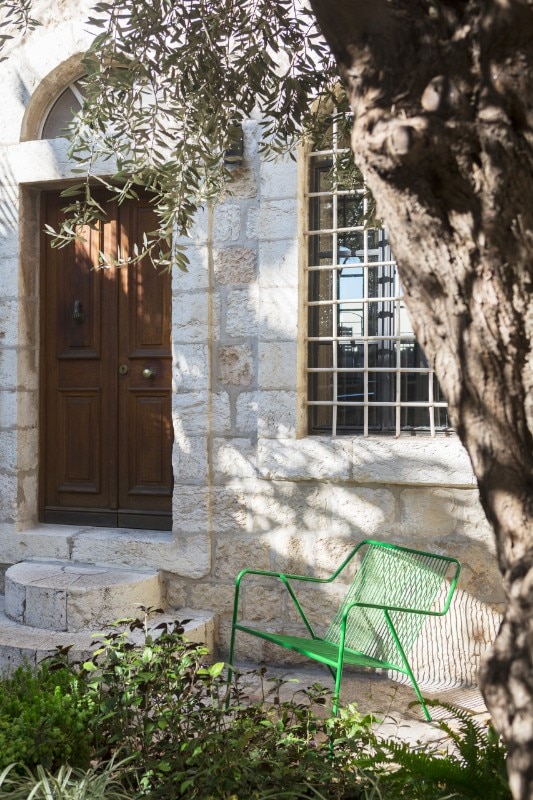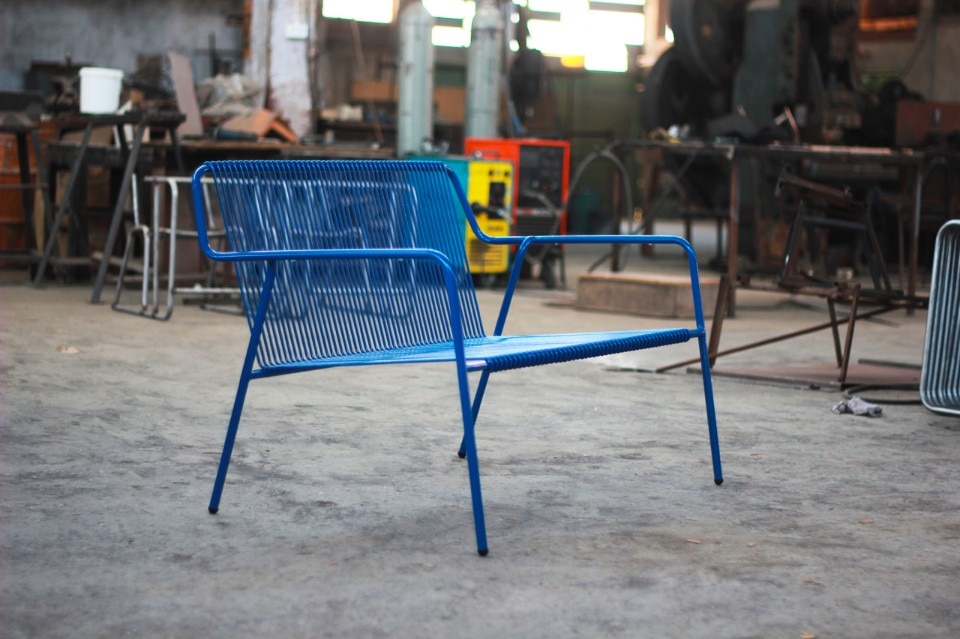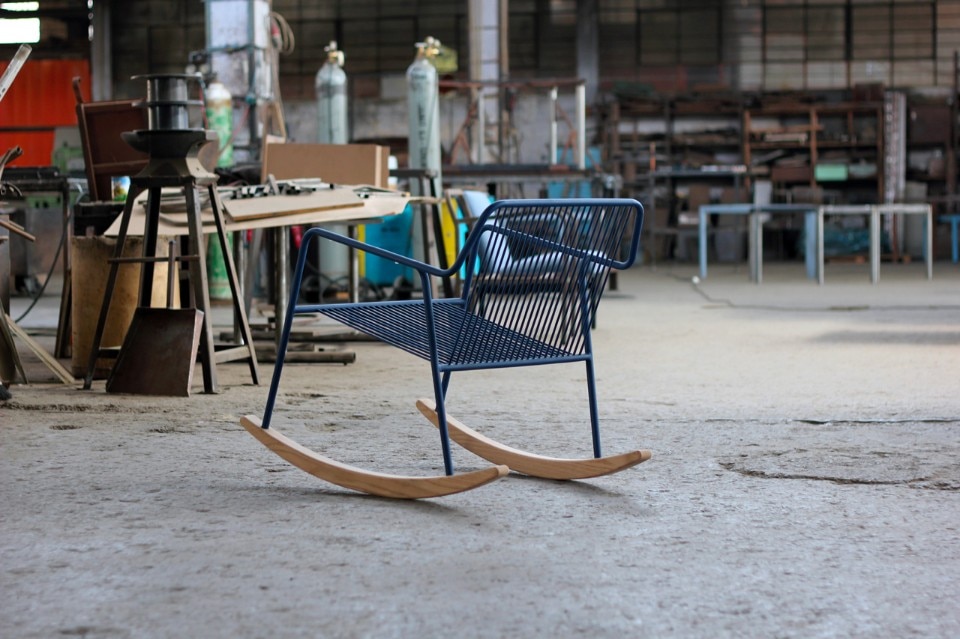A breakaway approach to local design in the Middle East is distancing itself from traditional objects and employing local craft knowhow to project the area towards new products that are sometimes foreign to its identity. Launched in Bethlehem in 2011, Local Industries is a small furnishing brand manufacturing tubular-steel seating with a strongly graphic design made of broken lines and Pop colours. Its founders Elias and Yousef Anastas are partners in the AAU Anastas architectural practice. From Bethlehem and Paris, where their offices are based, they coordinate research activity that continuously explores architectural practice on all scales, from building design to the creation of site-specific installations using stereotomy (the latest one was commissioned by the Victoria & Albert Museum for the London Design Festival) and the conception of new furnishings in collaboration with a network of artisans, all from Bethlehem. We met them to explore their vision of “local” practice and how this can be turned into an opportunity for relaunch and innovation.
Giulia Zappa: Your work as creators of design springs from your architectural careers. How did you come to manufacture furniture? What continuity is there between these two spheres of research?
Youssef Anastas: Local Industries was inspired by one of our architectural projects, the Edward Said Conservatory of Music in Beit Sahour. By the time the building was completed there was no money left for furnishings and the clients had considered the options of using old furniture or buying new pieces in Turkey. We insisted on working with the local artisans who had already been involved in the construction of the Conservatory. As time passed, our network of collaborators was refined and the Local Industries production evolved from the initial project that had triggered it, although the dialogue of scale as too our work as architects is always developing.
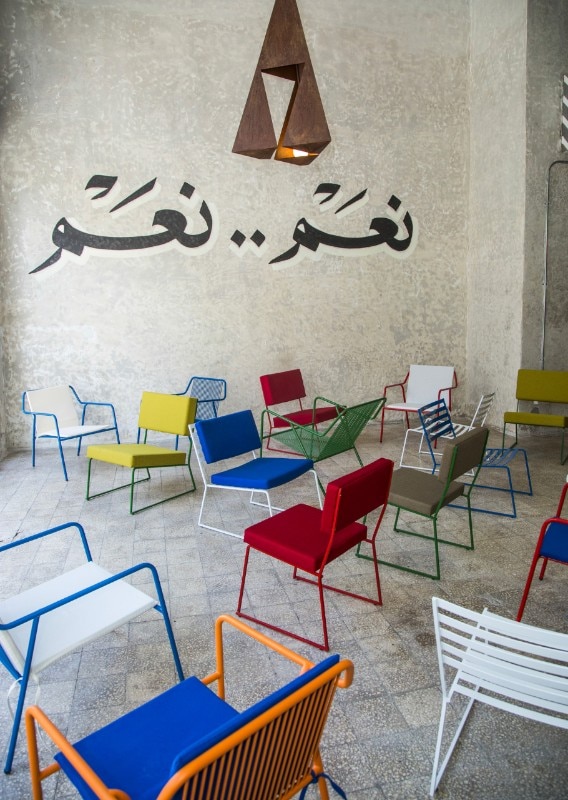
Il rifugio è stato costruito con legno riciclato proveniente da vecchie case demolite nella zona, in un’ottica sostenibile vista la crescente deforestazione nel Sud-Est asiatico. Il progetto del tetto utilizza sistemi costruttivi locali, massimizzando l’utilizzo di materiali reperiti in loco. Il tetto delle case e il bagno sono composti da un primo rivestimento di aluzinc fissato a una struttura resistente alla pioggia; da un secondo strato intermedio di tronchi di eucalipto installati verticalmente per favorire la ventilazione e uno strato esterno di foglie di canna da zucchero prese da un raccolto vicino al lotto del progetto.
Giulia Zappa: Tubular steel is Local Industries’ preferred material yet local craft tradition, linked to the production of religious artefacts for five centuries, works primarily with materials such as olive wood and mother-of-pearl. What drove this decision to break away?
Youssef Anastas: Our furniture could be manufactured anywhere but we are interested in the specific local context when we design it. In Bethlehem, there’s an old factory that manufactured beds for the Jordanian army and, after that, furniture for the schools in Palestine. A small number of its workers are still active and we brought them in to work on our Local Industries’ production. That’s our way of being local.
Elias Anastas: The concept of working with local artisans is always perceived as a romantic way of reproducing things made in the past, especially in these parts. We are far more interested in extrapolating the artisans’ knowhow, projecting it onto unexpected objects and starting conversations that make them think differently.
Giulia Zappa: The formal results of your products seem foreign to mainstream Arab taste. How do the artisans respond to your requests? What is the public’s reaction?
Elias Anastas: Working with the artisans is stimulating because they share our love of a challenge. Certainly, perplexities have emerged. Here, we are used to large domestic spaces and bulky furniture whereas Local Industries’ pieces do not easily “fill” a space. The mentality is changing however. Local Industries was founded in 2011 but we exhibited in Palestine for the first time last May. The reactions were good both businesswise and in terms of the debate on what can be manufactured here today.
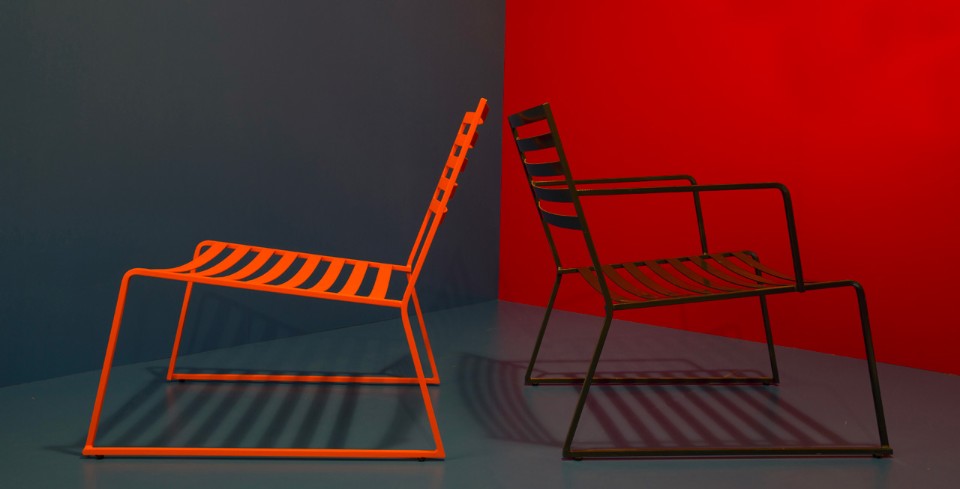
Giulia Zappa: Continuity with the local culture is often mentioned, sometimes rhetorically, as an added value to innovation in contemporary design. How can you stop the link with tradition lapsing into a cliché?
Elias Anastas: We have often been asked to design things that are symbolical of Palestine but we believe that exploiting the peculiar geopolitical situation is the easy route but also a weak one, just as Orientalisation at any cost eventually becomes wearing.
Yousef Anastas: Working as architects and designers on different scales, it is interesting to move beyond the folkloristic and nostalgic approach to materials. We believe that the city a person lives in also reflects the type of chair they will choose for their home and vice versa. Working successfully with our craft network allows us to generate a new morphology.
Giulia Zappa: Local Industries almost exclusively produces seating. Why did you choose to focus on this specific design type?
Yousef Anastas: When you put two chairs together in a space, you immediately help define it and change its appearance.
Elias Anastas: We make chairs because they are the most complex design objects and are extremely functional. That said, we would also like to embrace other types and are working on a new limited-edition collection for 2018. We hope to involve other designers working in the Middle East by inviting them to Bethlehem and having them design pieces that are, again, based on local craft knowhow but benefit from this broader vision and give rise to shared initiatives.
Giulia Zappa: You have just returned from London where you presented While We Wait, an installation commissioned by the Victoria & Albert Museum for the London Design Festival.
Elias Anastas: The V&A commissions three designers to produce a site-specific installation in the museum every year. We presented a study we have been conducting for some time on stereotomy, the art of cutting stones to create a self-supporting structure. Palestine has an age-old tradition of working stone that dates from the times of the Ottoman Empire, when stone served as a favoured building material. Now its use has been perverted and restricted simply to decoration, in the form of facade cladding. That is why we want to continue our experimentation and turn While We Wait into a permanent installation in the Cremisan Valley, between Bethlehem and Jerusalem, in continuity with its original landscape.
© all rights reserved


